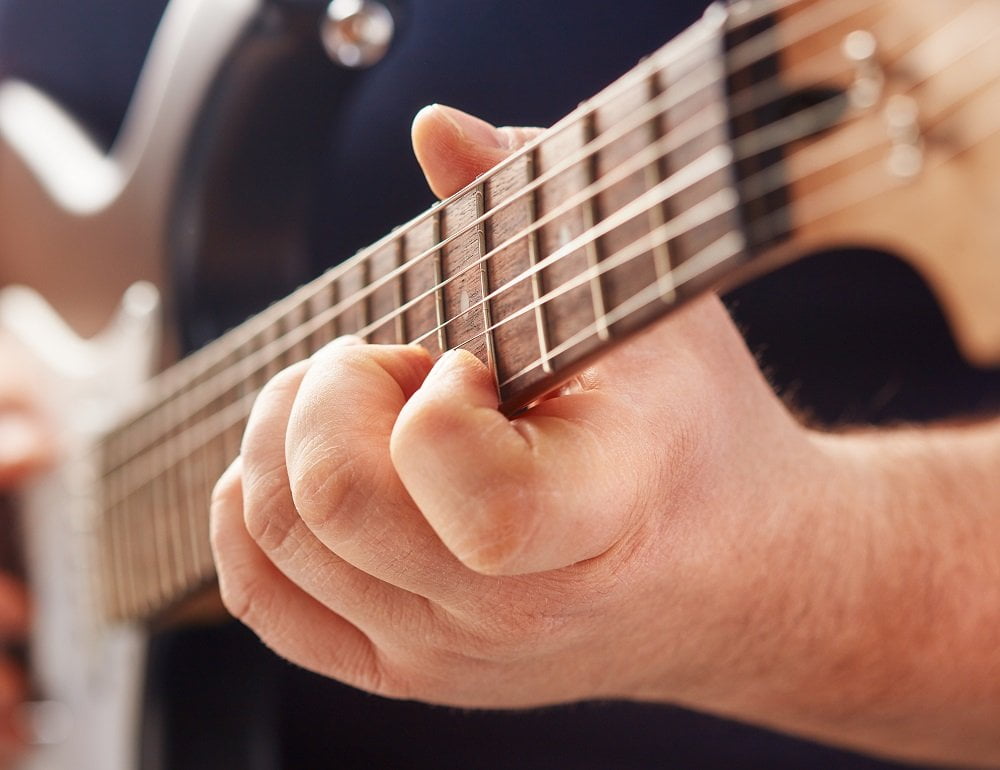How to Play the A Major Scale on Guitar
The A major scale is a useful exercise for guitar players of all levels, as it appears in various music genres. Knowing the notes of this scale can be beneficial for your musical journey. Additionally, learning major scales can improve your familiarity with the instrument and train your ear, regardless of your music theory knowledge. This lesson will cover the notes that comprise the A major scale and teach you how to play it in two positions. Finally, we will provide some exercises to help you incorporate this important scale into your guitar practice routine. Are you ready to begin?
Notes on the A major scale
The A major scale consists of 7 notes:
- A
- B
- C#
- D
- E
- F#
- G#
The root note of the A major scale is A. To form an A major chord, you would combine A with the major third note C# and the perfect fifth note E. It can be played in various positions on the guitar fretboard, but it always consists of seven identical notes. In the following section, we will explore the various finger placements and positions required to play the A major scale on the guitar.
A major scale positions
When learning to play the A major scale on the guitar, guitar scale diagrams can be a valuable resource. These diagrams depict the guitar fretboard, and each dot represents a note that should be played on a specific string and fret. If a dot appears above the string with a note name, that indicates the string should be played in an open position. The root note of the scale is represented by dark dots, which in this case, is A.
Open position
To play the A major scale in open position correctly, use your index finger to play notes on the first fret, your middle finger for notes on the second fret, your ring finger for notes on the third fret, and your pinky for notes on the fourth fret.
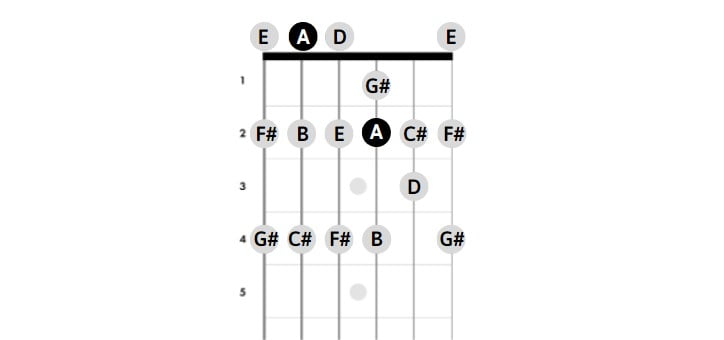
4th position
To play the A major scale in 4th position, you should move your hand up so that your index finger is on the fourth fret. The scale begins with your middle finger on the fifth fret of the E string, followed by your ring finger on the sixth fret and your pinky finger on the seventh fret.
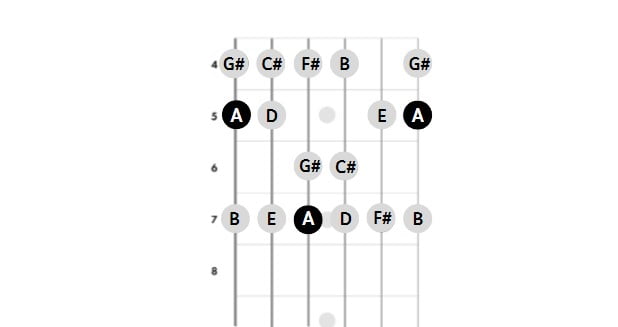
A major scale tabs
In the following section, we will revisit the A major scale in open and fourth position, but this time using a different notation method. Guitar tabs, unlike guitar scale diagrams, demonstrate the order in which notes should be played. It's possible that you may prefer one notation method over the other, and that's perfectly acceptable. However, it's crucial to have a grasp of both notation methods since they are both commonly used. Learning to play with both notation methods is a valuable practice that will guarantee you're not restricted as you progress in your guitar studies. Let's now examine guitar tabs for the two scales we previously studied.
Open position
To play the A major scale in the open position, begin by playing an open note on your A string. After that, place your middle finger on the second fret of the A string, and follow the guitar tab to complete playing the scale.
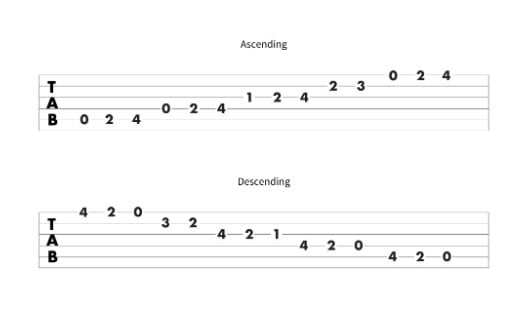
4th position
To play the A major scale in fourth position, begin with your middle finger on the fifth fret of your low E string. Then, use your index finger for notes on the fourth fret, your ring finger for notes on the sixth fret, and your pinky finger for notes on the seventh fret. Follow the guitar tab to play this scale in fourth position.
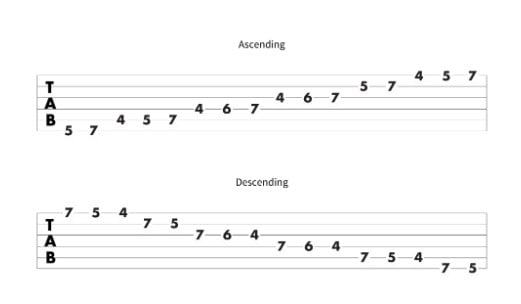
A major scale exercises
To memorize and master the A major scale, it's best to play the scale repeatedly, ensuring that each note is fretted cleanly and the proper finger placement is used. As your fingers become stronger and the scale pattern becomes more familiar, you can gradually increase your speed. Practicing with a metronome can help you maintain a consistent tempo while practicing scales. Additionally, try switching back and forth between the two A major scale positions you've learned, listening to the pitch differences as you play the same notes on different spots on the fretboard. Once you've mastered the scales with your fretting hand, use your scale practice to work on your alternate picking technique or try playing your scales with a syncopated rhythm. Regularly practicing your scales can improve your finger strength and dexterity, as well as train your ears. If you want to keep practicing, you can try Guitar tunio.


